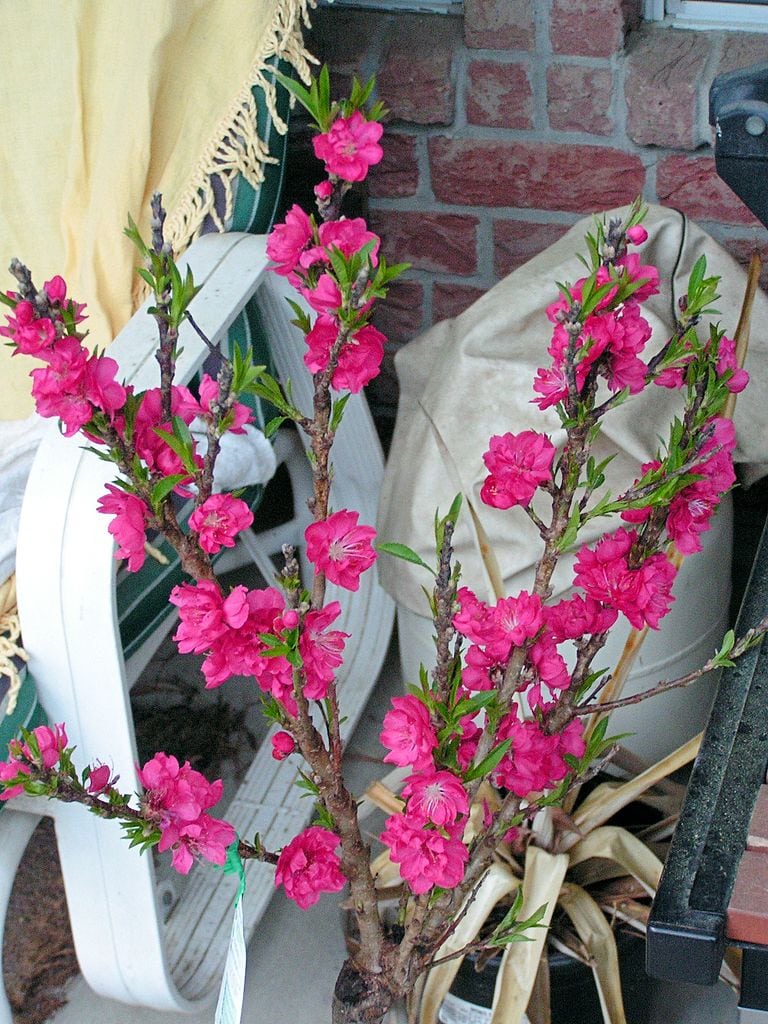Bonanza Peach Growing – How To Care For A Bonanza Peach Tree


If you’ve always wanted to grow fruit trees but have limited space, Bonanza dwarf peaches are your dream come true. These miniature fruit trees can be grown in small yards and even in patio containers, and they still produce full-size, delicious peaches each summer.
Bonanza Peach Tree Information
Bonanza miniature peach trees are dwarf fruit trees that only grow to about 5 or 6 feet (1.5 to 2 m.) tall. And the tree will grow well in zones 6 through 9, so it is an option for many home gardeners. The fruits are large and sweet, with a delicious flavor and juicy, yellow flesh. These are freestone peaches, so they are easy to free from the pit. Not only is this a compact tree that produces tasty fruits, it is also a great ornamental. Bonanza produces pretty, dark green and glossy leaves and an abundance of pink, spring flowers. In a container, when trimmed regularly to keep a nice shape, this is a very attractive little tree.
How to Grow and Care for a Bonanza Peach Tree
Before you get you get into Bonanza peach growing, be sure you have the space and conditions for it. It is a small tree, but it will still need enough room to grow up and out in full sun conditions. Bonanza is self-pollinating, so you won’t need an additional peach tree to set fruit. If using a container, pick one that is large enough for your tree to grow into, but also expect that you may need to transplant it in the future to a larger pot. Amend soil if it doesn’t drain well or is not very rich. Water the Bonanza tree regularly during the first growing season and prune while it’s dormant to shape the tree and keep it healthy. If you put it directly into the ground, you shouldn’t have to water the tree much after the first season, but container trees need more regular moisture. Bonanza peaches are early, so expect to start harvesting and enjoying the fruit from early to mid-summer depending on your location and climate. These peaches are delicious eaten fresh, but you can also can or freeze them to preserve them for later and bake and cook with them.
Gardening tips, videos, info and more delivered right to your inbox!
Sign up for the Gardening Know How newsletter today and receive a free copy of our e-book "How to Grow Delicious Tomatoes".

Mary Ellen Ellis has been gardening for over 20 years. With degrees in Chemistry and Biology, Mary Ellen's specialties are flowers, native plants, and herbs.
-
 Looking For Plants To Give You The Soft And Fuzzies? Try These 5 Fuzzy Leaf Plant Options
Looking For Plants To Give You The Soft And Fuzzies? Try These 5 Fuzzy Leaf Plant OptionsLovers of texture, drama, silver foliage and tactile plants will adore these special sensory garden additions. These fuzzy leaf plant options will leave you all aglow
By Susan Albert
-
 Get Ready For A Summer Of Hummers! Grow These Full Sun Hummingbird Plants and Flowers
Get Ready For A Summer Of Hummers! Grow These Full Sun Hummingbird Plants and FlowersIf you’re lucky enough to enjoy a sunny backyard, make sure you are maxing out on your pollinator opportunities and grow these full sun hummingbird plants and flowers
By Tonya Barnett